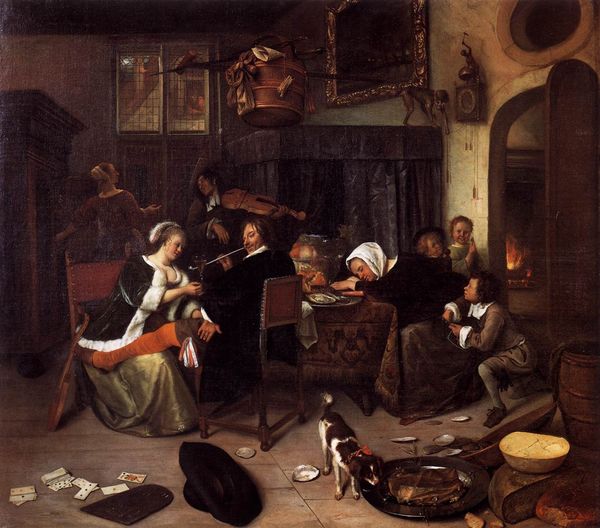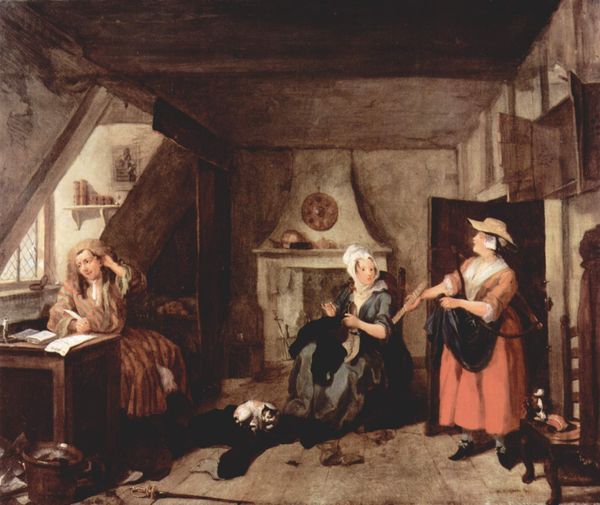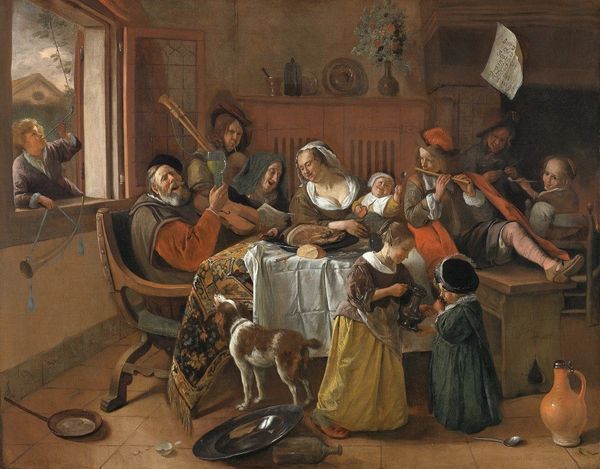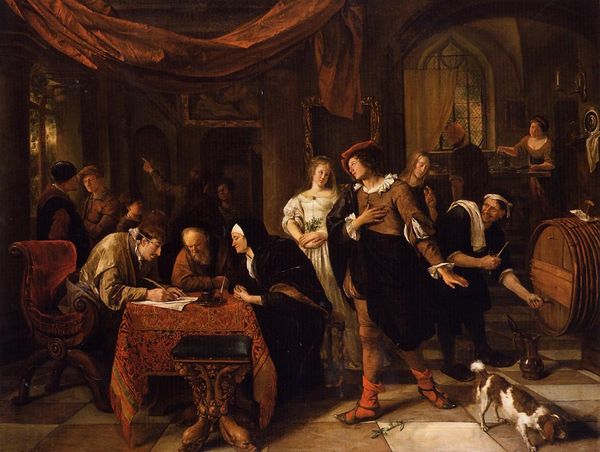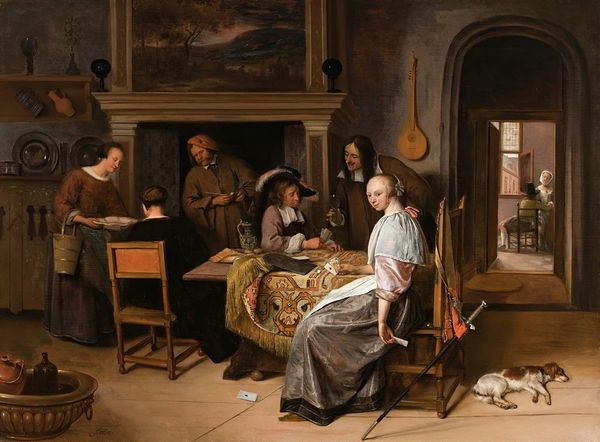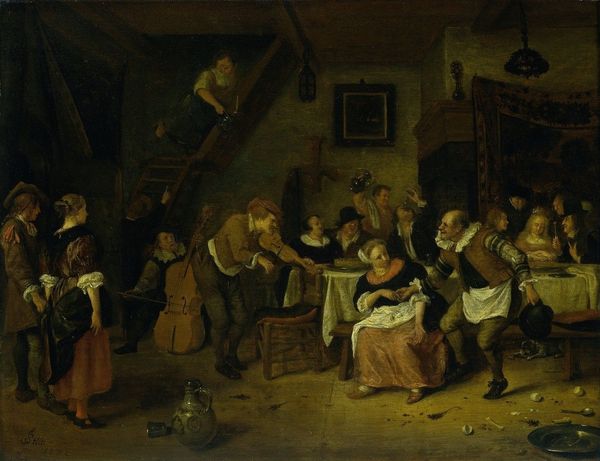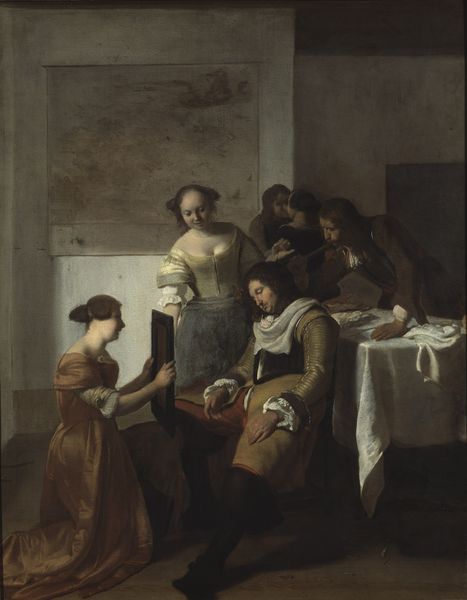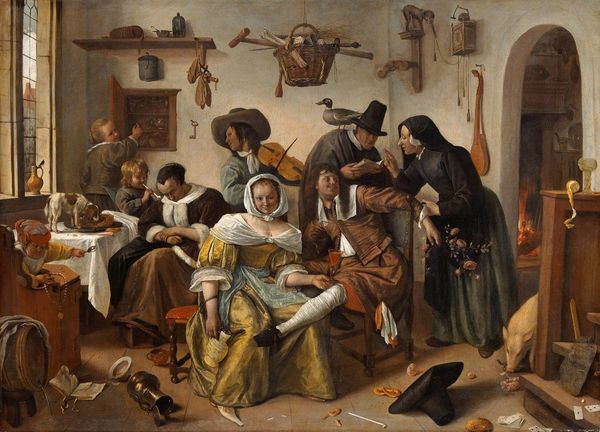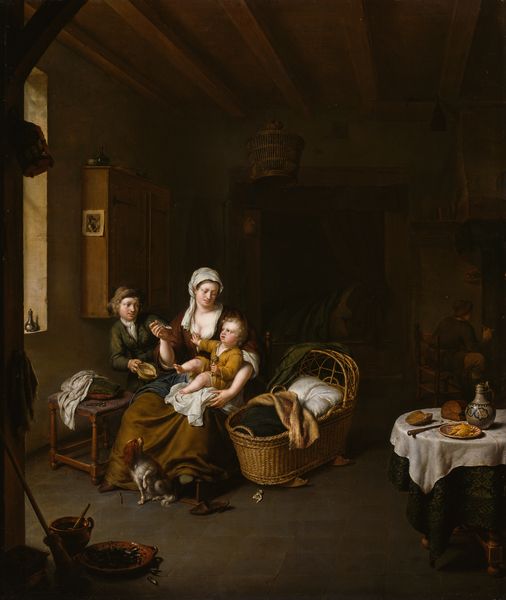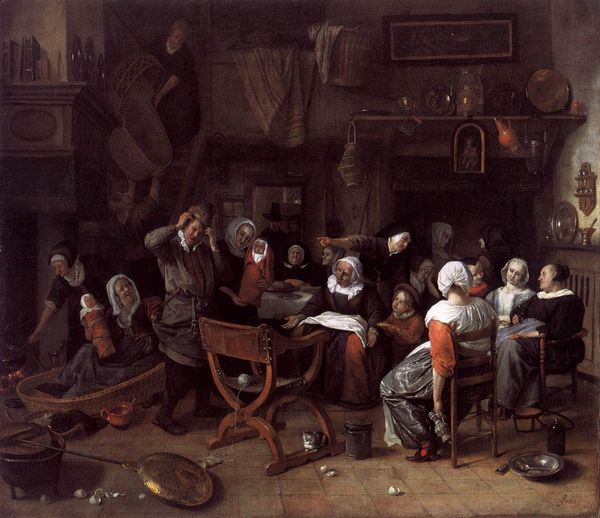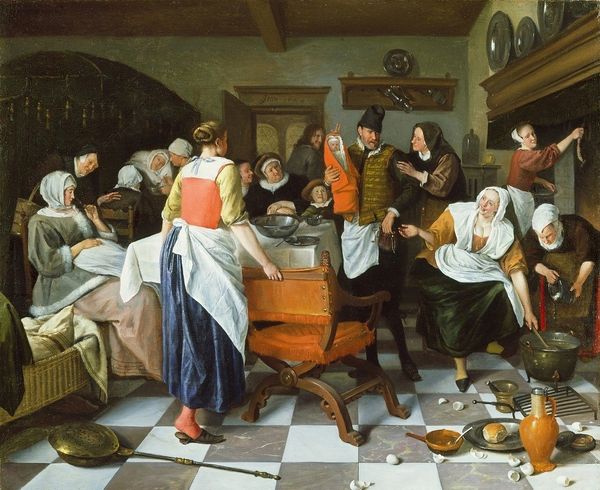
painting, oil-paint
#
narrative-art
#
baroque
#
dutch-golden-age
#
painting
#
oil-paint
#
figuration
#
group-portraits
#
genre-painting
Dimensions: 83 x 99 cm
Copyright: Public domain
Editor: This is Jan Steen's "Baptism," an oil painting teeming with domestic activity. It looks like a snapshot of 17th century Dutch life, both chaotic and joyous. What do you see in this scene from your perspective? Curator: Well, it's clear that Steen uses a domestic scene to comment on the social importance placed on religious rituals. The prominent placement of the baptism itself, overshadowed by everyday distractions – the party at the table, children playing – it questions the performative nature of religious piety within Dutch society at the time. Editor: So you're saying he's not necessarily critiquing religion itself, but rather how people practice or display their faith? Curator: Precisely. Consider the historical context. The Dutch Republic, while largely Protestant, had a significant Catholic minority, and differing opinions on proper religious expression were circulating publicly. Genre paintings like these gave visual form to such social dialogues. What kind of audience do you imagine viewing this? Editor: Well, since it's not overtly religious, and depicts a middle-class setting, I would imagine a broader audience beyond just those deeply religious. It’s accessible. Curator: That accessibility is key to its social function. These works reinforced social norms, sparked debates, and subtly shaped public perception. Jan Steen definitely challenges the way social norms operate here. What does that upturned chair imply to you? Editor: Hmm, maybe disarray and the unpredictable reality of domestic life. Curator: Or perhaps the subversion of social hierarchy implied with formal domestic space undone, mirrored within this ‘holy’ moment? Editor: That's a fascinating perspective! I'll definitely look at genre paintings with a more critical eye now, considering their role in shaping societal views. Curator: Glad I could share some thoughts; it’s useful to remember art's integral function within socio-historical fabrics.
Comments
No comments
Be the first to comment and join the conversation on the ultimate creative platform.
